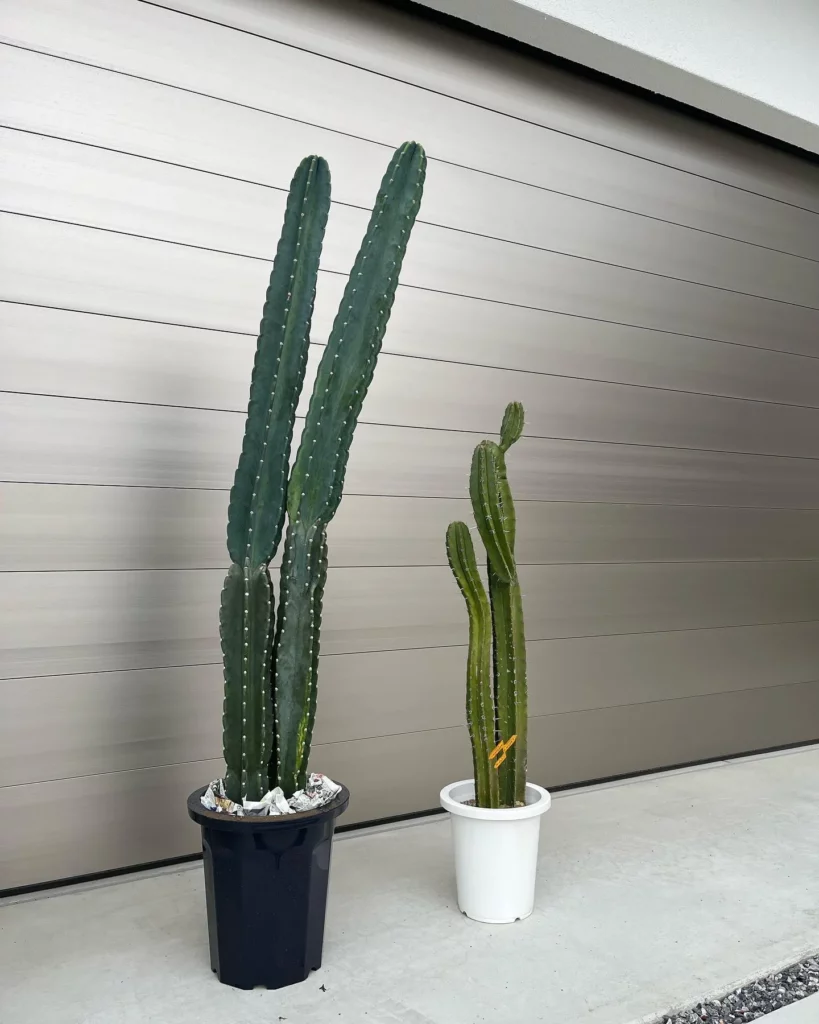The Ocahui Agave is a stunning succulent with a distinctive appearance. Its dense rosette of narrow, yucca-like leaves adds a touch of elegance to any garden or indoor space. The leaves are dark green, stiff, and have straight, smooth margins. A narrow reddish-brown border lines each leaf, creating a beautiful contrast against the vibrant green color.
Key Takeaways:
- The Ocahui Agave is a versatile succulent native to Sonora, Mexico.
- It prefers full sun with reflected heat and is drought-resistant.
- Water sparingly and make sure the soil dries out between waterings.
- Use well-draining soil and provide proper potting to promote healthy growth.
- Monitor for pests like mealybugs and spider mites, and take action if necessary.
Appearance of Ocahui Agave
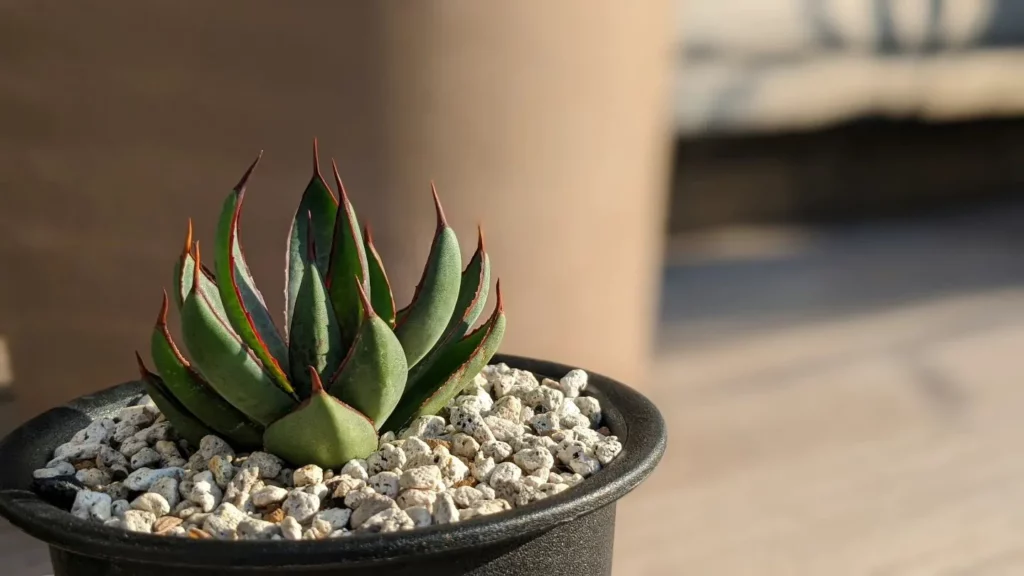
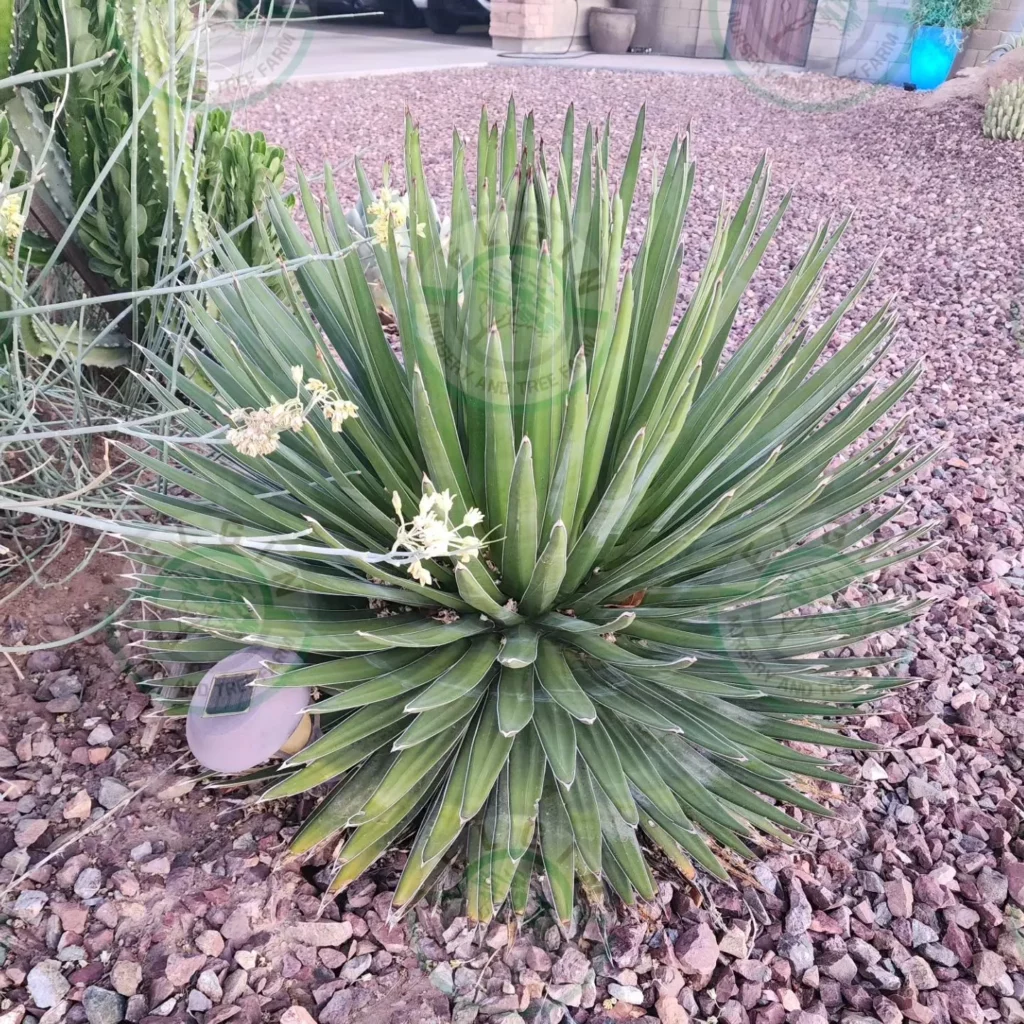
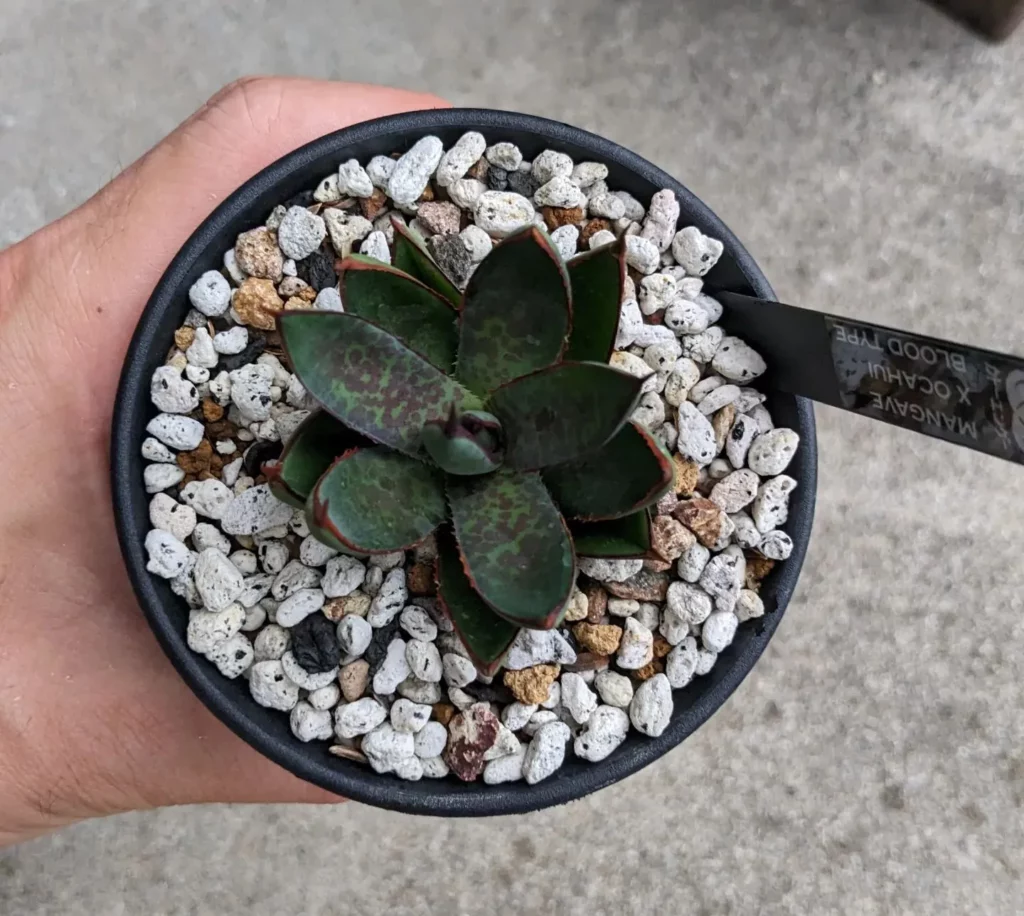
The Ocahui Agave stands out with its sharp, terminal spine at the tip of each leaf. This characteristic gives the plant a unique architectural quality, making it a standout feature in any landscape. Unlike some other agave varieties, the Ocahui Agave does not produce offsets, maintaining its clean and symmetrical appearance.
When the Ocahui Agave blooms, it puts on a spectacular show. It produces small, bright yellow blossoms on a tall stalk that can reach up to eight feet in height. This dramatic flower spike adds a burst of color and vertical interest to the plant, creating a focal point in the garden. The combination of the Ocahui Agave’s striking leaves and stunning flower spike makes it a captivating addition to any collection.
Light Requirements for Ocahui Agave
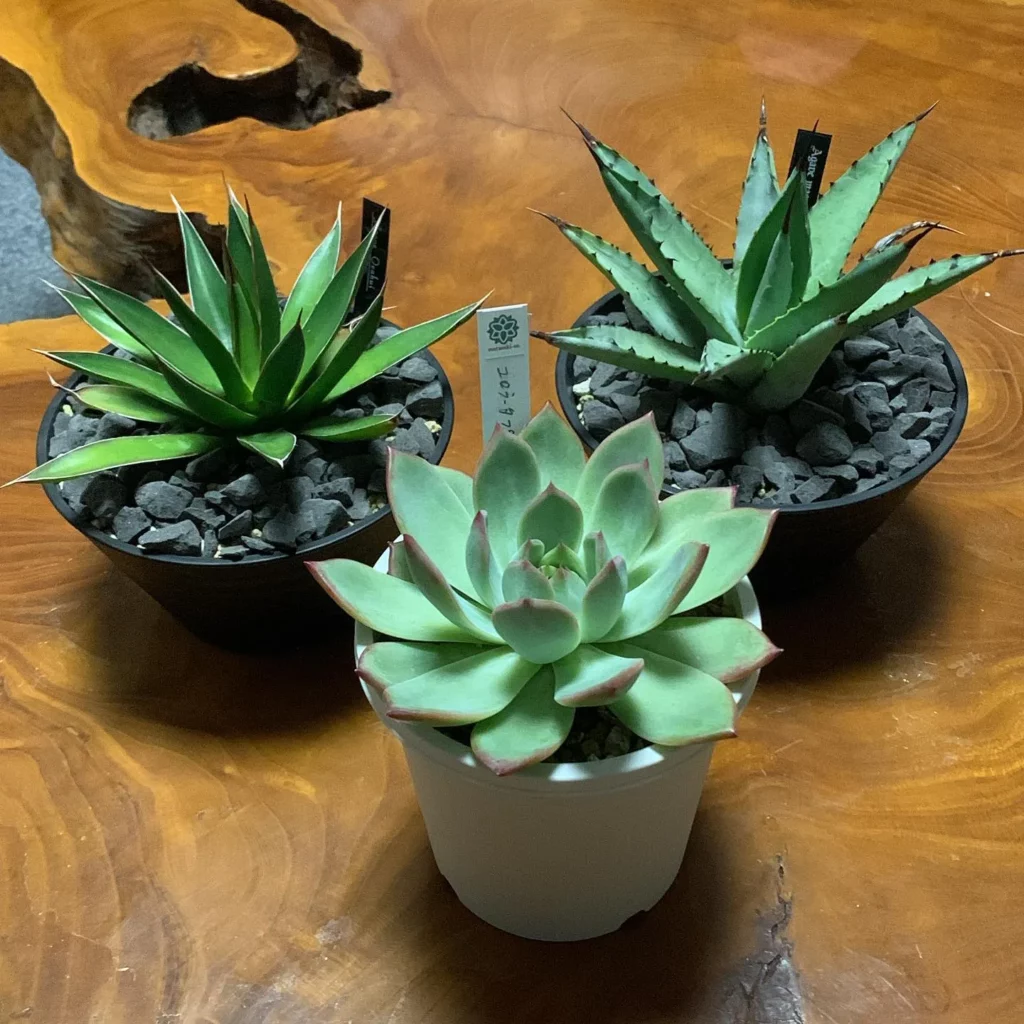
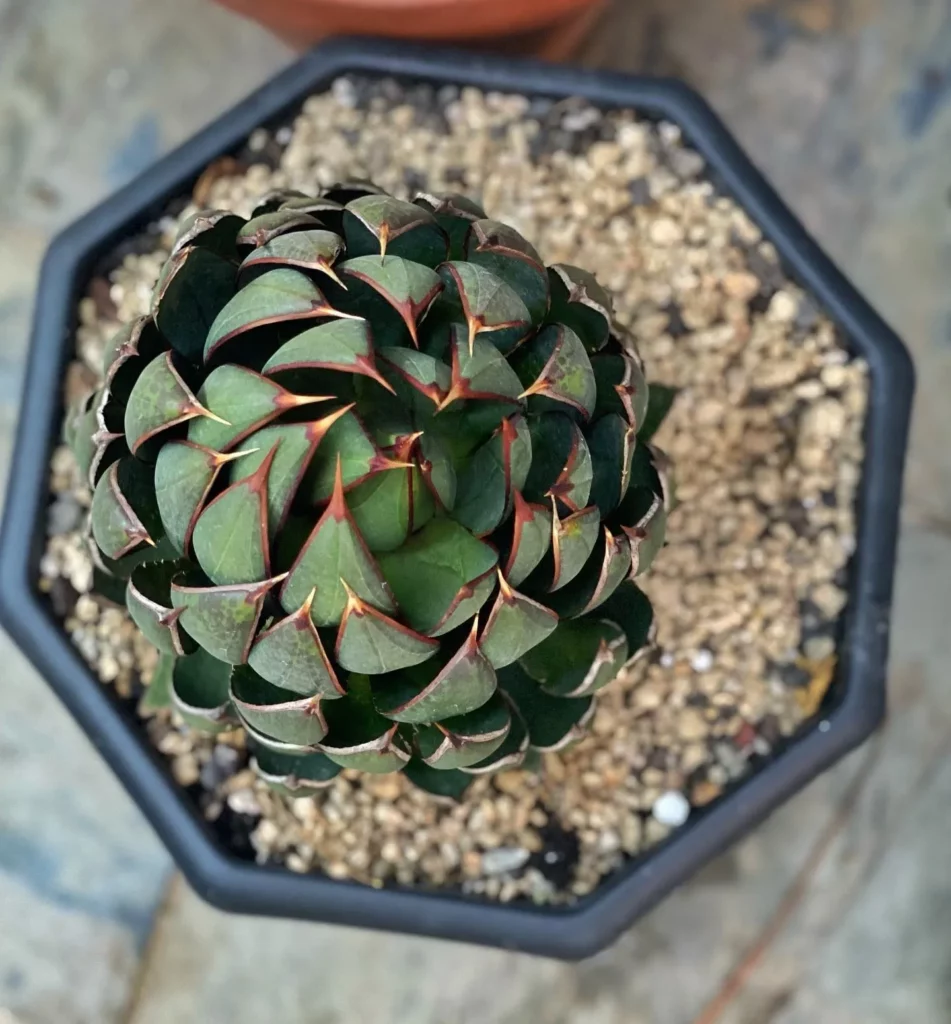
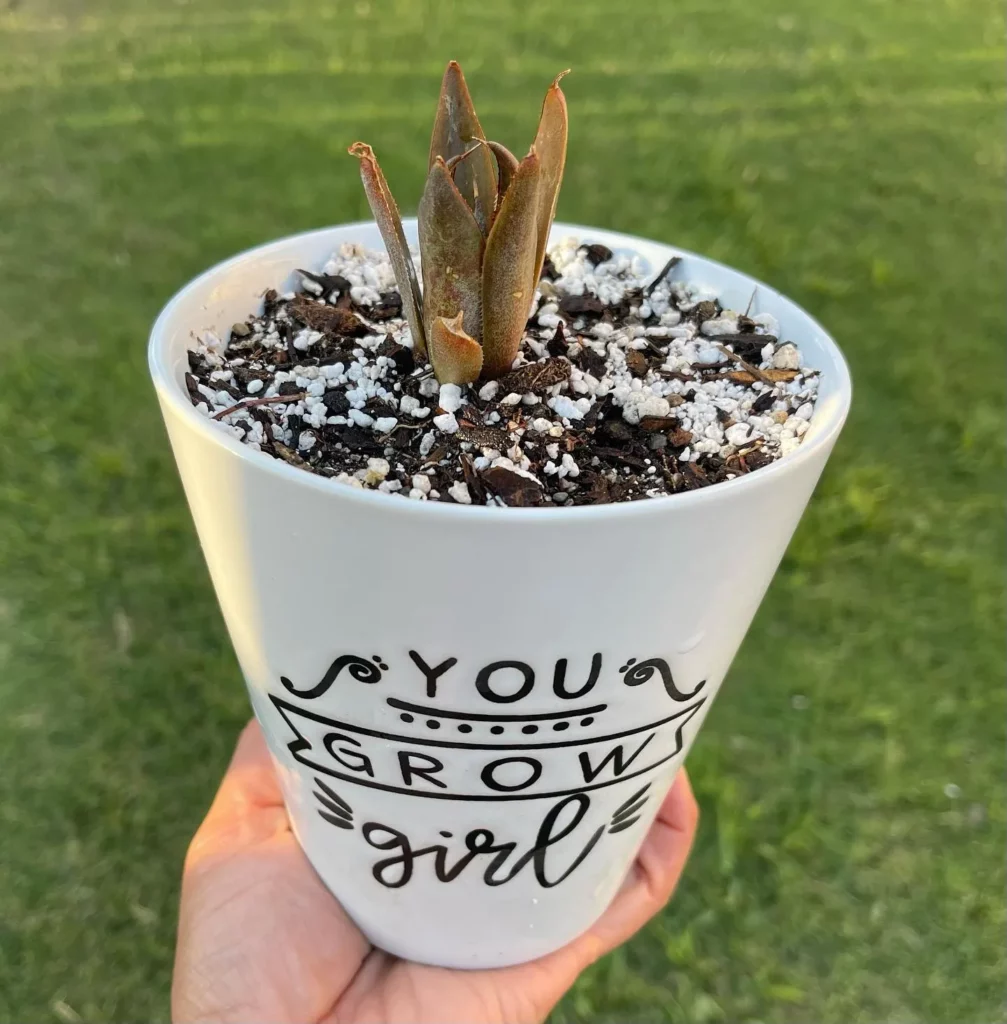
When it comes to providing the right amount of light for your Ocahui Agave, it’s important to strike the perfect balance. This versatile succulent thrives in full sun with reflected heat, making it an ideal choice for sunny locations in your garden or outdoor space. However, it can also tolerate some shade, making it a versatile plant for various lighting conditions.
If you’re growing the Ocahui Agave outdoors, it’s crucial to provide it with strong light to ensure its optimal growth. Place it in a spot where it can receive direct sunlight for at least 6-8 hours a day. If you’re growing it indoors, make sure to place it near a bright window where it can receive ample sunlight. You may also consider using artificial grow lights to supplement its light requirements.
Here are some key points to remember about the light requirements of the Ocahui Agave:
- Full sun with reflected heat is preferred, but it can tolerate some shade.
- Provide the plant with at least 6-8 hours of direct sunlight if grown outdoors.
- Place it near a bright window if grown indoors.
- Consider using artificial grow lights to supplement its light requirements.
Watering Ocahui Agave
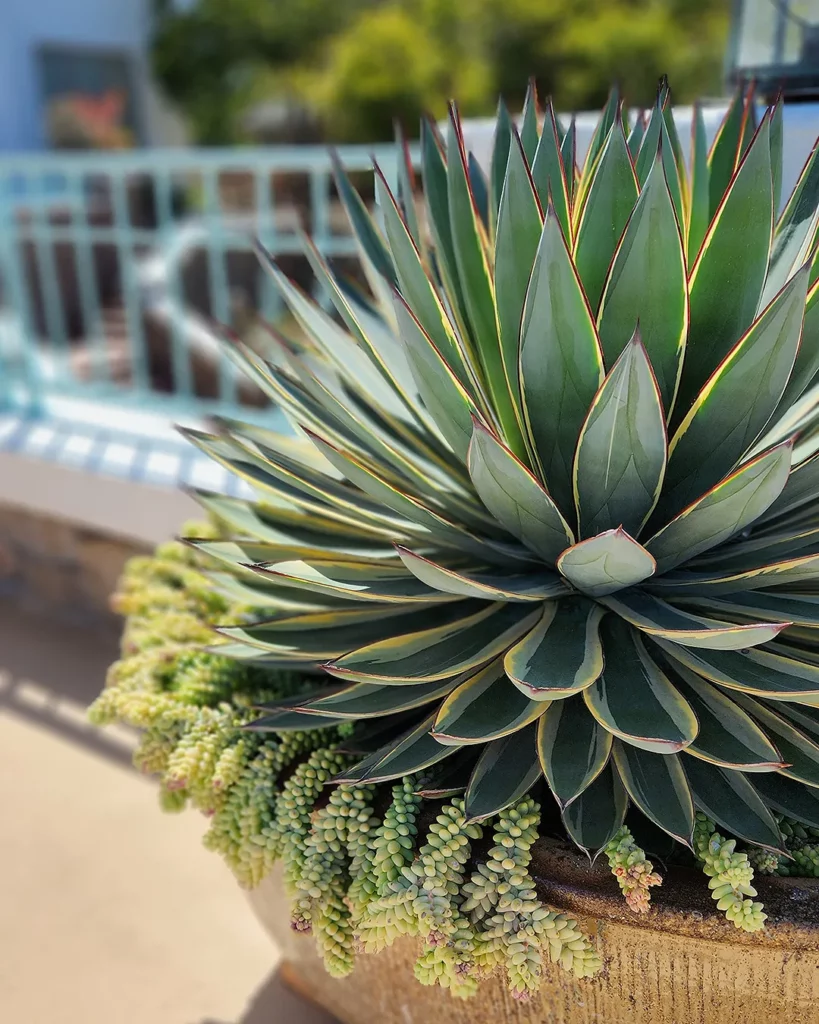

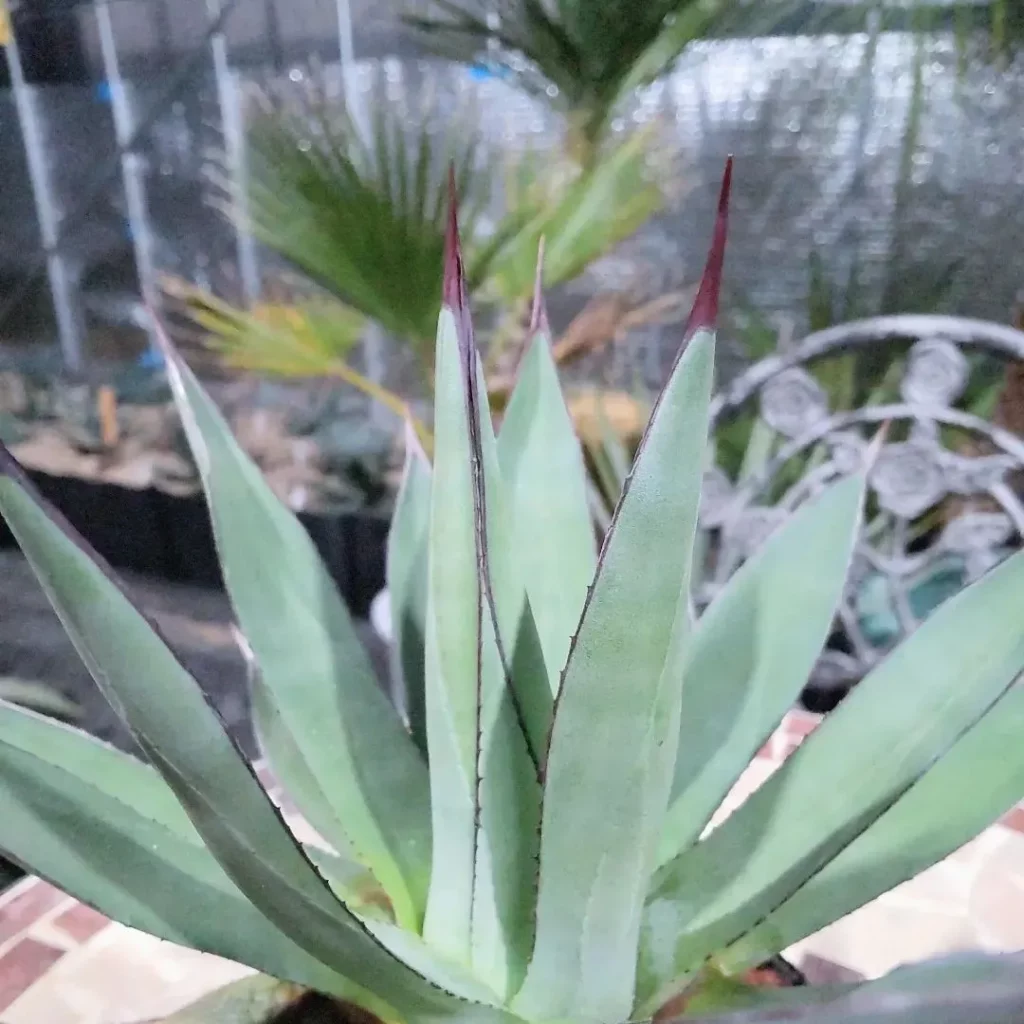
Proper watering is essential for the health and vitality of your Ocahui Agave. While this succulent is drought-resistant, it still requires some supplemental irrigation, especially during hot, dry weather. However, it’s crucial not to over-water the plant, as this can lead to root rot and other issues.
To water your Ocahui Agave effectively, I recommend using the soak and dry method. This means thoroughly saturating the soil when you water and then allowing it to dry out before watering again. This approach mimics the natural rainfall pattern in the plant’s native environment and helps prevent waterlogged roots.
When watering your Ocahui Agave, make sure to soak the soil around the base of the plant until water runs out of the drainage holes of the pot. This ensures that the roots receive enough water for proper hydration. After watering, allow the soil to completely dry out before watering again. It’s important not to let the soil stay consistently wet, as this can cause the roots to rot.
Signs of Underwatering and Overwatering
- If your Ocahui Agave is underwatered, you may notice the leaves becoming shriveled, wilted, or discolored.
- On the other hand, overwatering can lead to yellowing leaves, root rot, and a mushy texture in the plant’s base.
- It’s important to strike a balance and find a watering routine that works well for your specific plant and environment.
Fertilizing Ocahui Agave
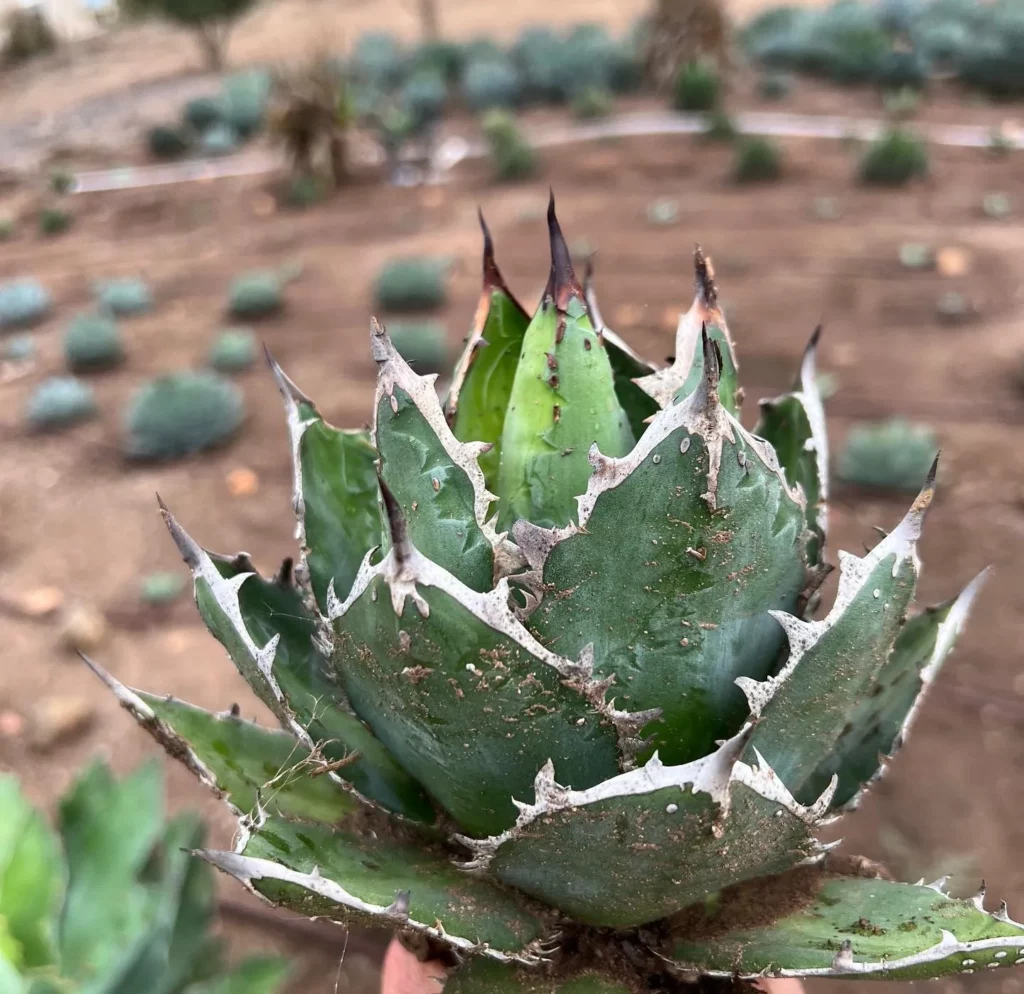
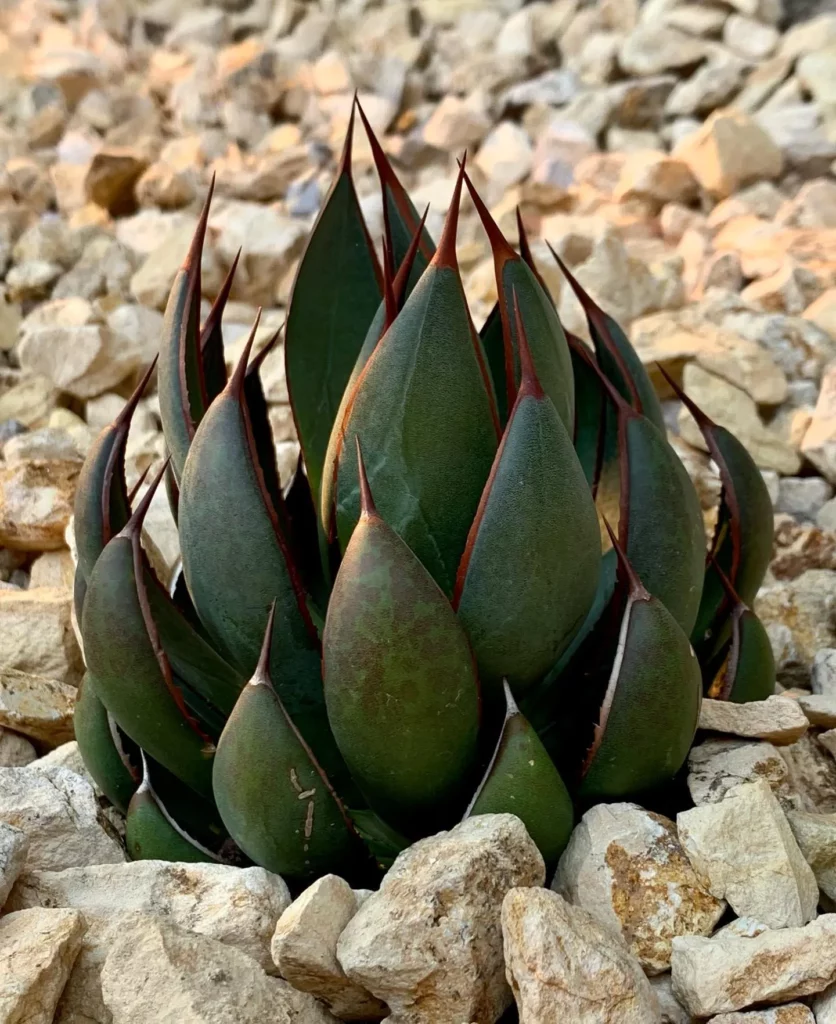
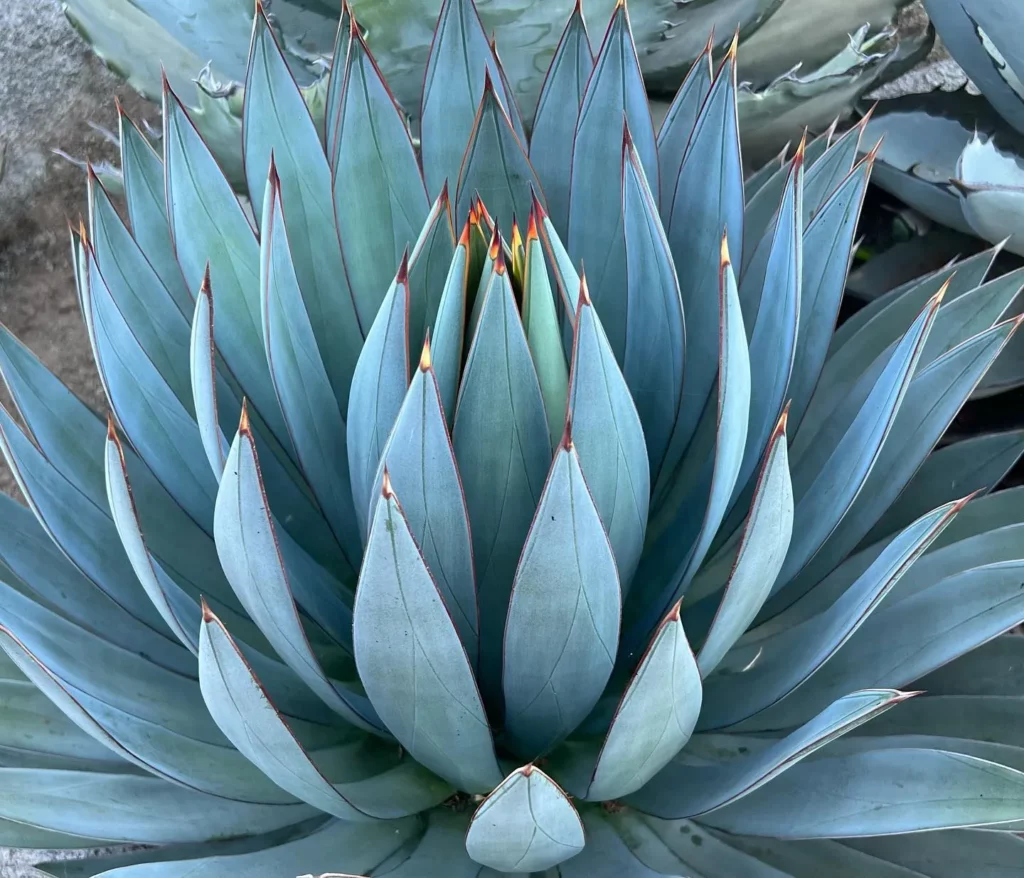
Fertilizing the Ocahui Agave can help promote healthy growth and enhance its overall appearance. However, it’s important to note that this plant doesn’t require frequent fertilization. A granulated time-release fertilizer can be applied in the spring to provide the necessary nutrients for the growing season. Be sure to follow the instructions on the fertilizer packaging, as over-fertilizing can harm the plant.
When choosing a fertilizer for your Ocahui Agave, opt for a balanced formula specifically designed for succulents. This will ensure that the plant receives the correct proportions of essential nutrients. It’s recommended to dilute the fertilizer to half the strength suggested on the packaging to avoid any potential burning of the plant’s roots.
How to Fertilize Ocahui Agave:
- Choose a balanced, slow-release fertilizer specifically formulated for succulents.
- In the spring, apply the fertilizer according to the instructions on the packaging, diluting it to half the recommended strength.
- Spread the fertilizer evenly around the base of the plant, taking care not to allow it to come into direct contact with the leaves or stem.
- Water the plant thoroughly after applying the fertilizer to ensure proper absorption.
- Avoid fertilizing during the winter months, as the plant is generally dormant during this time.
Potting Ocahui Agave
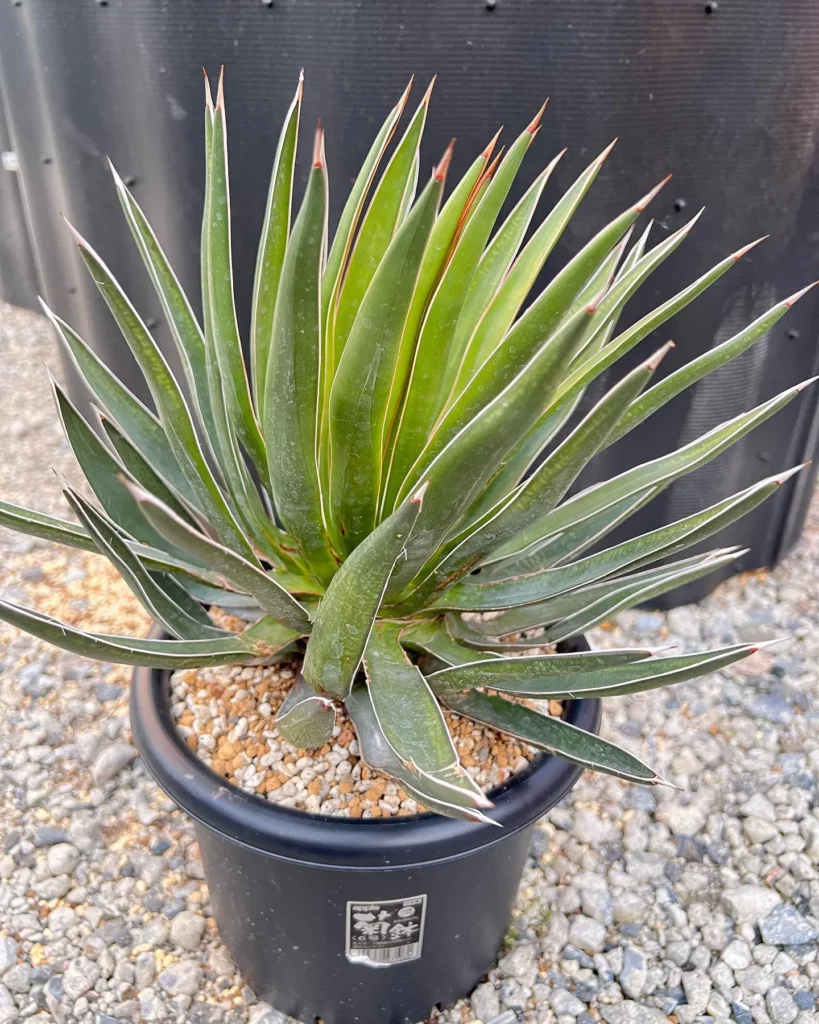
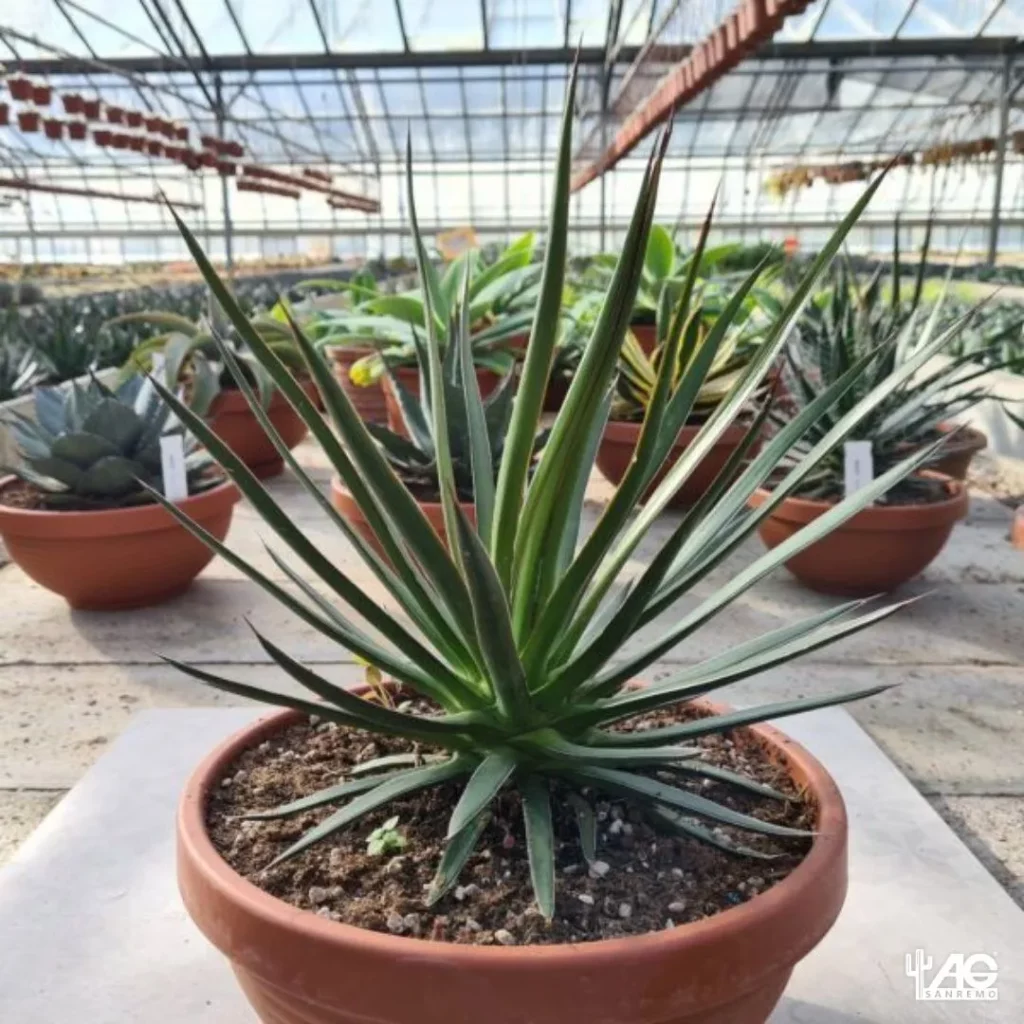
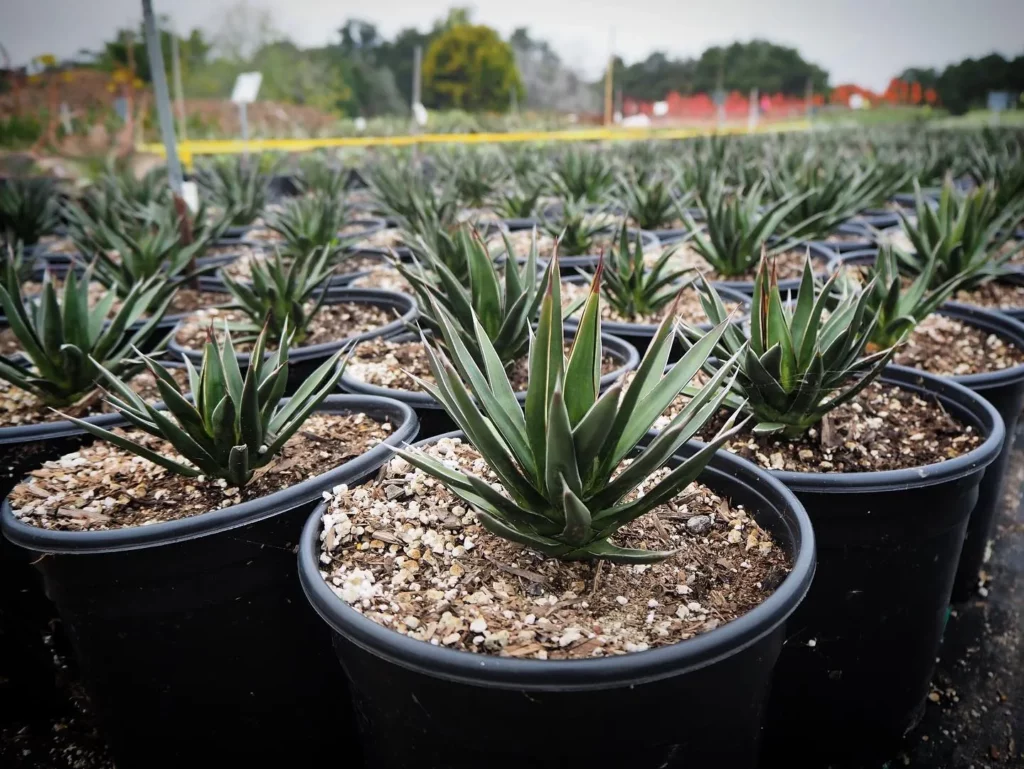
When it comes to potting the Ocahui Agave, choosing the right soil mixture is key. Opt for a well-draining soil that is composed of approximately half gritty material such as sand or grit. This will ensure that excess water doesn’t accumulate in the pot, preventing the risk of root rot. Additionally, using a pot with drainage holes is essential to allow water to flow out freely.
Repotting the Ocahui Agave every year or so is beneficial for the plant’s health. This allows you to replenish the soil and perform a root prune if necessary. When repotting, carefully remove the plant from its current container, gently loosen the roots, and place it in a new pot with fresh soil. Be cautious not to damage the roots during this process.
To successfully pot the Ocahui Agave, follow these steps:
- Select a well-draining soil mixture.
- Choose a pot with drainage holes.
- Carefully remove the plant from its current container.
- Loosen the roots and inspect for any signs of damage or disease.
- Place the plant in a new pot, ensuring the base of the plant is level with the top of the pot.
- Add soil around the roots, gently firming it in place.
- Water the plant thoroughly but allow the soil to dry out before watering again.
Propagation of Ocahui Agave
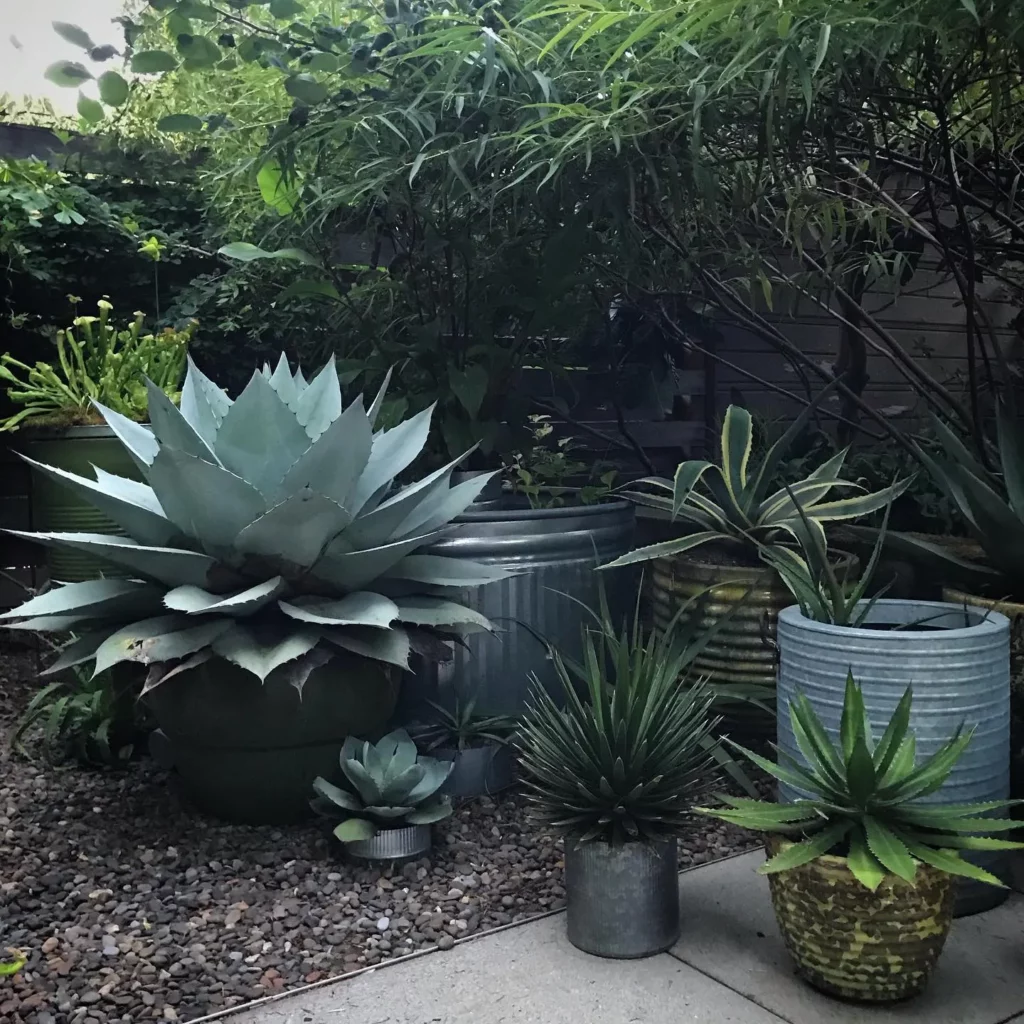
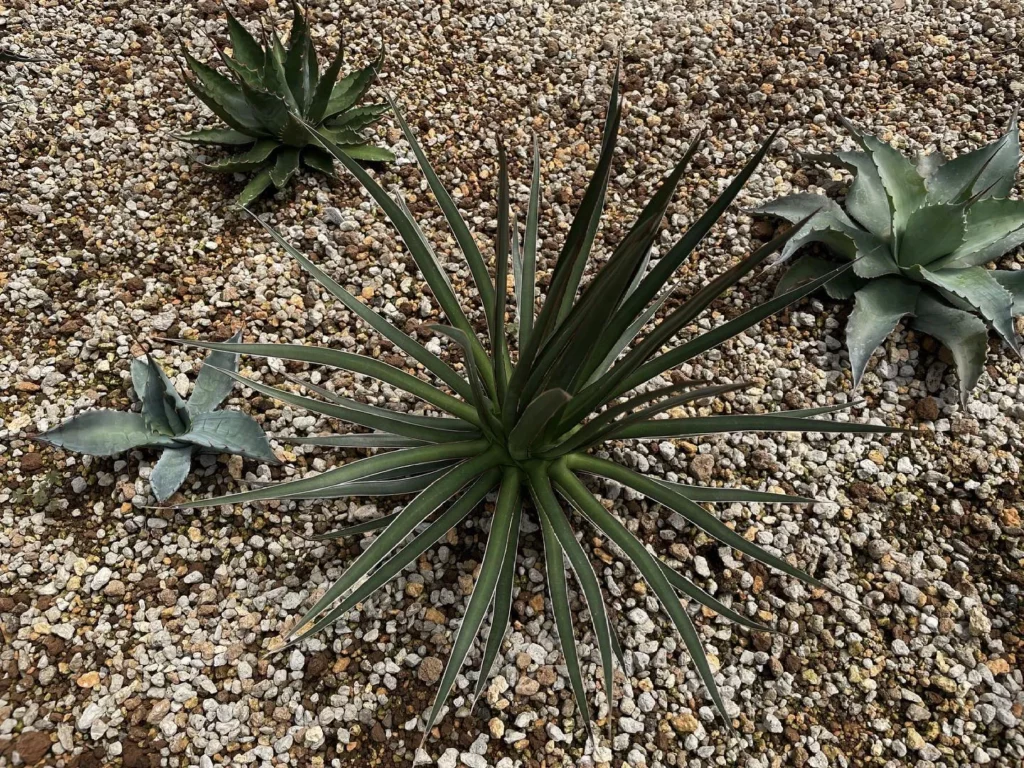
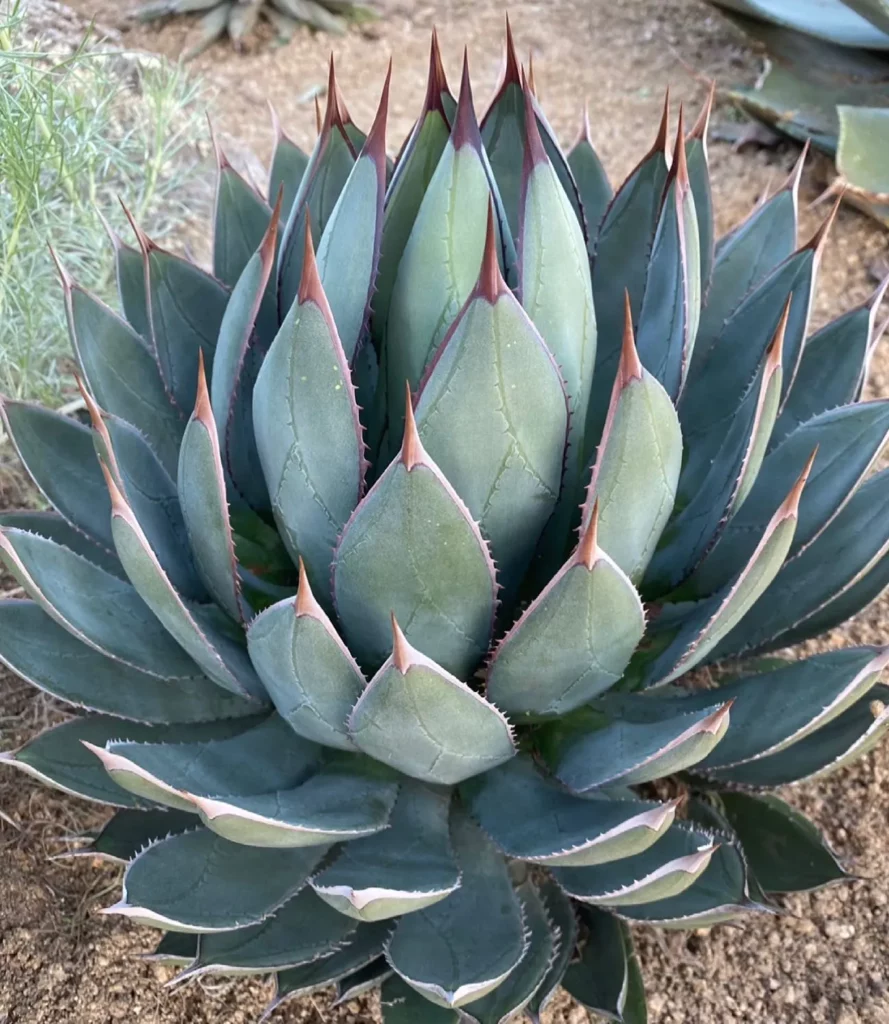
Propagating the Ocahui Agave can be done through various methods, including cuttings, leaves, offsets, or seeds. Each method has its own requirements and steps to follow.
1. Cuttings
To propagate through cuttings, carefully remove a healthy leaf from the mother plant. Allow the cut end to dry and callous for a few days. Then, plant the cutting in well-draining soil and water when the soil dries out. With proper care, the cutting will develop roots and grow into a new Ocahui Agave plant.
2. Offsets
Offsets, also known as pups, are small plants that grow from the base of the main Ocahui Agave plant. Wait for the offsets to develop their own root system before separating them from the parent plant. Use a sharp knife to carefully detach the offset, keeping some root intact. Plant the offset in well-draining soil and water gently until it establishes roots.
3. Seeds
Propagation through seeds is possible but not recommended for the Ocahui Agave, as it is a slow grower. If you choose to propagate from seeds, sow them in well-draining soil and keep them moist until germination. It may take several years for the seeds to grow into mature plants, so patience is required with this method.
Growth and Development of Ocahui Agave
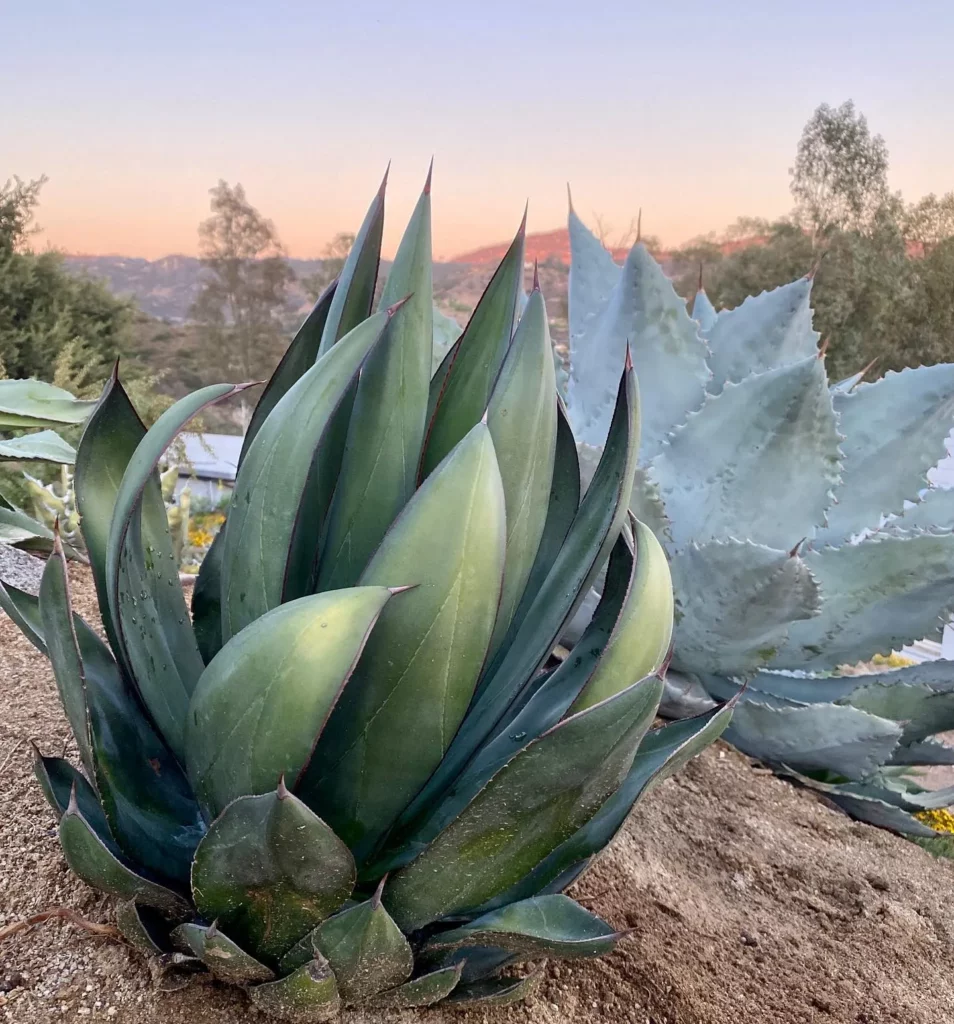
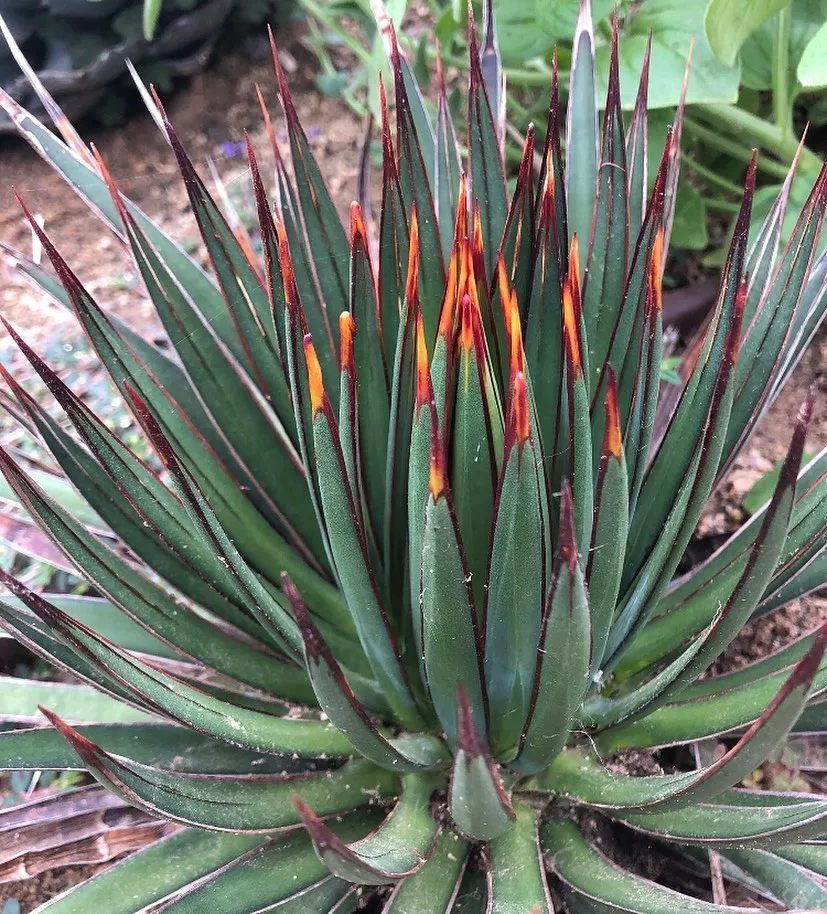
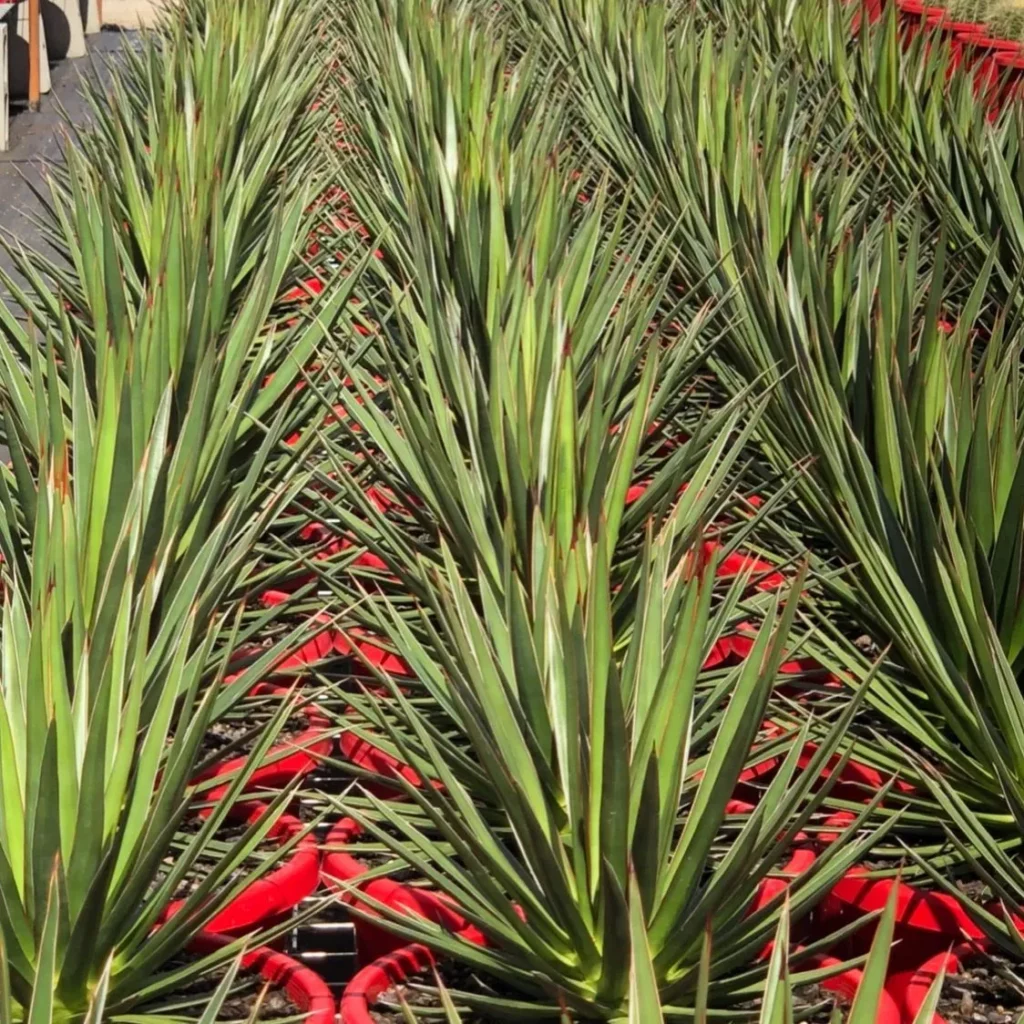
The Ocahui Agave is a slow-growing succulent that exhibits impressive growth and development. This versatile plant can reach heights of up to three feet and widths of up to three feet, making it a striking addition to any garden or indoor space. Despite its slow growth, the Ocahui Agave is hardy and can tolerate temperatures as low as 15 degrees Fahrenheit, making it suitable for a variety of climates.
One notable feature of the Ocahui Agave is its ability to develop an impressive flower spike at the end of its growing cycle. This spike can grow up to eight feet tall and is adorned with small, bright yellow blossoms. While the plant itself does not produce offsets, the striking flower spike is a beautiful reward for the patient gardener.
To ensure healthy growth and development, it is important to provide the Ocahui Agave with the appropriate conditions. This includes placing the plant in an area with full sun and reflected heat, although it can tolerate some shade. Additionally, the Ocahui Agave is drought-resistant and prefers to be watered sparingly. Regular monitoring for pests and diseases is also essential, as the plant can occasionally be affected by common succulent pests such as mealybugs or spider mites.
Key Points:
- The Ocahui Agave is a slow-growing succulent that can reach heights and widths of up to three feet.
- This plant develops an impressive flower spike at the end of its growing cycle.
- The Ocahui Agave prefers full sun with reflected heat and is drought-resistant.
- Regular monitoring for pests and diseases is important to ensure the plant’s health.
Pests and Diseases of Ocahui Agave
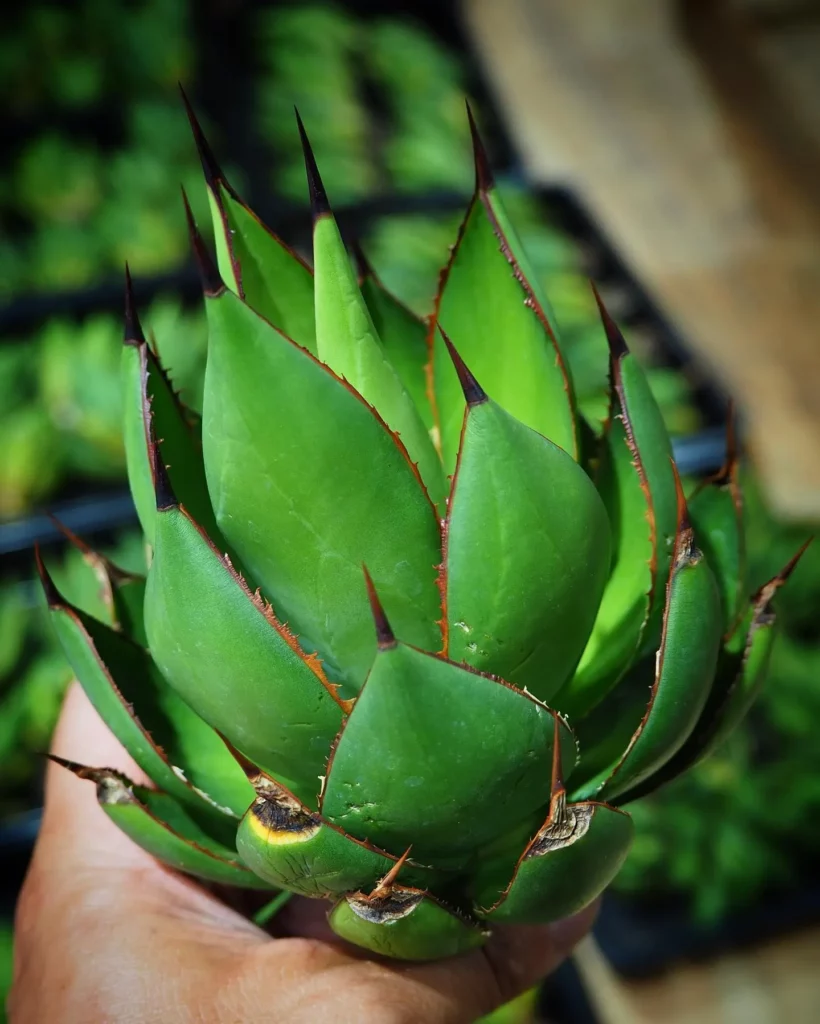
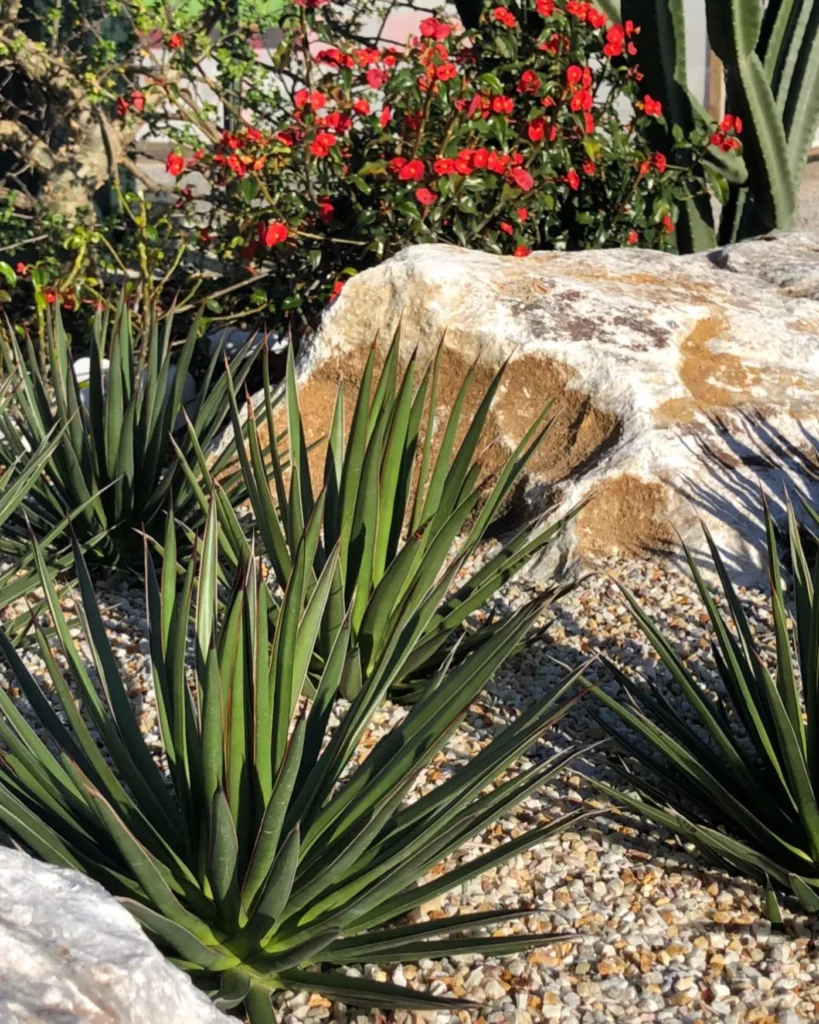
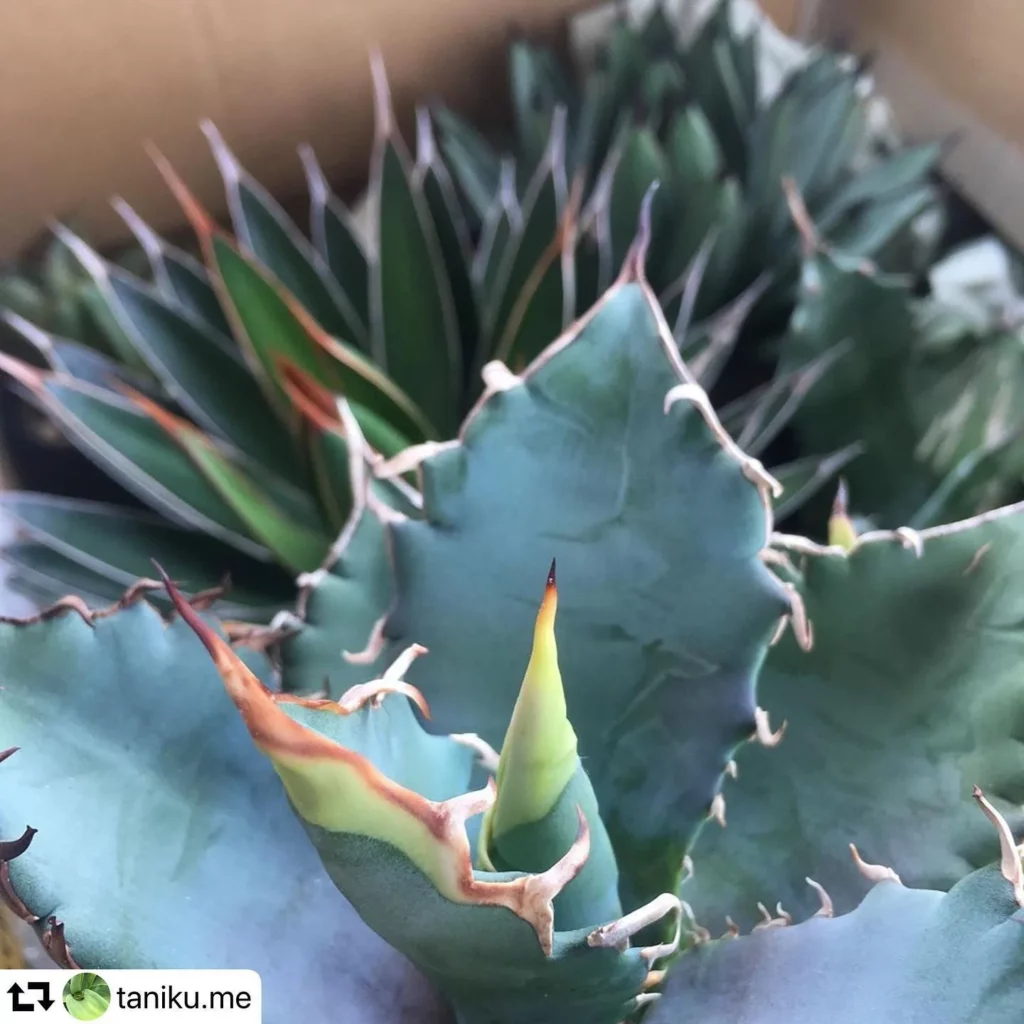
In caring for your Ocahui Agave, it’s important to be aware of potential pests and diseases that can affect this resilient succulent. While the Ocahui Agave is generally resistant to most issues, it is still susceptible to a few common problems.
One of the main pests that can affect your Ocahui Agave is the mealybug. These tiny, sap-sucking insects can quickly multiply and infest your plant, causing damage to the leaves. To combat mealybugs, I recommend making a simple organic solution using water and dish soap. Mix the solution in a spray bottle and apply it to the affected areas, making sure to thoroughly cover the leaves. This will help eliminate the mealybugs and prevent further damage.
Another pest to watch out for is the spider mite. These tiny arachnids can cause webbing on the leaves and suck the plant’s juices, leading to wilting and discoloration. To control spider mites, you can gently wash the leaves with a mixture of water and dish soap or use a neem oil spray. Regularly inspecting your Ocahui Agave for any signs of spider mites and treating them promptly will help keep your plant healthy and thriving.
In addition to pests, over-watering and poorly draining soil can lead to root rot in the Ocahui Agave. It’s important to allow the soil to dry out between waterings to prevent this fungal disease. Ensure that your pot has proper drainage and use a well-draining soil mixture composed of sandy or gritty material. By maintaining the right watering schedule and providing adequate drainage, you can successfully prevent root rot and ensure the longevity of your Ocahui Agave.
FAQ
Can the Ocahui Agave be propagated through cuttings?
Yes, the Ocahui Agave can be propagated through cuttings. Carefully remove a leaf from the mother plant, allow it to callous, and then replant it in well-draining soil.
How often should I water the Ocahui Agave?
The Ocahui Agave is drought-resistant and does not like to be over-watered. It requires supplemental irrigation during hot, dry weather. Water the plant thoroughly and then allow the soil to dry out before watering again.
What type of soil should I use when potting the Ocahui Agave?
The Ocahui Agave prefers a well-draining soil mixture that is halfway composed of gritty material such as sand or grit. Use a pot with drainage holes to prevent water from sitting in the bottom and causing root rot.
How tall and wide can the Ocahui Agave grow?
The Ocahui Agave can reach heights of up to three feet and widths of up to three feet.
How can I control pests on the Ocahui Agave?
The Ocahui Agave is relatively resistant to pests, but it can occasionally be affected by mealybugs or spider mites. These pests can be controlled through organic methods such as spraying the plant with a mixture of water and dish soap.

